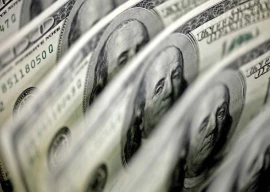
The government is anticipated to implement another significant hike in gas prices, averaging up to 41%, by mid-February, as part of the ongoing $3 billion loan programme with the International Monetary Fund (IMF). This move is expected to trigger a new wave of inflation in a market already grappling with persistent price pressures.
The IMF asserts that increasing gas prices is essential to curb the escalating circular debt. If realised, this would mark the second increase in fuel costs since November 2023.
Analysts from Optimus Capital Management, Fabeeha Ali Khan, and Zayan Babar Khan, stated in a joint commentary that Pakistan needs to announce its effective gas price hike for December 2023 by February 15, 2024, as per the IMF conditions.
According to IMF data, the circular debt in the gas sector reached Rs2.1 trillion (2.5% of GDP) by the end of FY23, showing a 28% YoY increase.
The analysts estimated that state-owned gas distribution companies, such as Sui Northern Gas Pipeline Limited (SNGPL), could raise gas prices by 41% or Rs506 per million British thermal units (mmbtu) to an average of Rs1,753 per unit. Similarly, Sui Southern Gas Company (SSGC) is projected to increase fuel prices by 15% or Rs226 per mmbtu to an average of Rs1,696 per unit.
Read SIFC steps in to end differences over gas price hike
These increases are anticipated to address revenue shortfalls faced by the gas distribution companies. SNGPL, facing a shortfall of Rs251.32 billion for the fiscal year 2023-24, is expected to generate additional revenue of Rs179.16 billion through tariff hikes on locally produced gas and another Rs72.16 billion on imported RLNG (re-gasified liquefied natural gas). SSGC, facing a Rs65.90 billion revenue shortfall for FY24, is likely to overcome the deficit through increased prices for indigenous gas by Rs47.77 billion and RLNG by Rs18.13 billion.
The proposed gas price hike might vary for different consumer sectors, such as domestic, commercial, and industrial, given that the government currently provides subsidised gas to residential consumers and fertiliser manufacturers. In contrast, higher tariffs are charged to commercial and industrial consumers, such as CNG fuel stations, under the cross-subsidy formula.
IMF recommends the withdrawal of the cross-subsidy equation, advocating for a uniform gas price for almost all consumers. The analysts mentioned that the IMF envisions semi-annual gas tariff adjustments, elimination of cross-subsidy to the fertiliser sector, phasing out of captive power usage, uniform rates for export and non-export sectors, establishing a quarterly gas circular debt flow reporting system, and finalising a circular debt management plan (CDMP).
The government is expected to disburse a substantial amount of Rs310 billion to government-owned power plants (GPPs) and independent power producers (IPPs) to address circular debt in FY24. These funds would then flow to gas distribution companies like SNGPL and SSGC and Pakistan State Oil (PSO), significantly improving their cash flows and enabling investments in infrastructure to reduce losses.
Read SSGC also seeks gas price hike
The analysts noted that gas companies estimate a revenue shortfall of Rs90 billion from RLNG diversion alone in FY24. Therefore, timely revision of gas prices will positively impact PSO, improving its liquidity from RLNG business.
Additionally, Oil and Gas Development Company Limited (OGDCL) is anticipated to receive its PHPL principal settlement of Rs82 billion in FY24, enhancing its liquidity. The government is also expected to save by converting term finance certificates (TFC) at Kibor+1% to public debt.
Regarding power circular debt, the analysts mentioned that it reached Rs2.5 trillion by September 2023, marking a Rs227 billion increase in the current fiscal year to date. The updated circular debt management plan (CDMP) for FY24 forecasts zero net CD accumulation, preventing further build-up of trade debts within the power sector.
The financial gap of Rs976 billion in the sector would be financed by the FY24 budget subsidy, covering projected power tariff differentials (DISCOs and KE, Rs319 billion), payments to provinces, tribal areas, and KE (Rs265 billion), and CD stock payments of Rs392 billion. The key priorities of FY24 CDMP include reforms like price rationalisation, transitioning to private sector management of DISCOs, reducing capacity payments, converting government-guaranteed PHPL debt into cheaper public debt, and expanding renewable energy capacity.
Establishing a specialised police force for all DISCOs and acknowledging electricity theft as a punishable offense to improve revenue collections would be another priority.
Published in The Express Tribune, January 24th, 2024.
Like Business on Facebook, follow @TribuneBiz on Twitter to stay informed and join in the conversation.
1737708567-0/BeFunky-collage-(32)1737708567-0-405x300.webp)


1737707799-0/BeFunky-collage-(31)1737707799-0-165x106.webp)
1737706577-0/BeFunky-collage-(30)1737706577-0-165x106.webp)












1737614355-0/Express-Tribune-(1)1737614355-0-270x192.webp)








COMMENTS (2)
Comments are moderated and generally will be posted if they are on-topic and not abusive.
For more information, please see our Comments FAQ